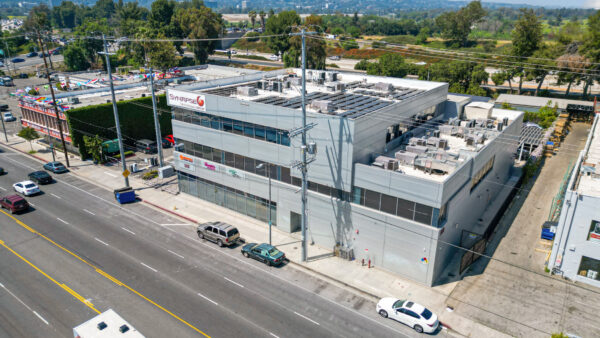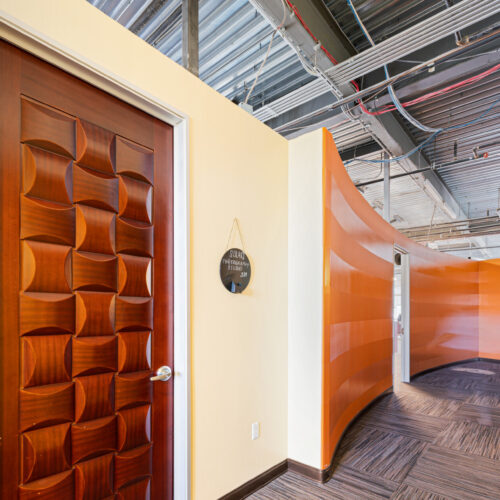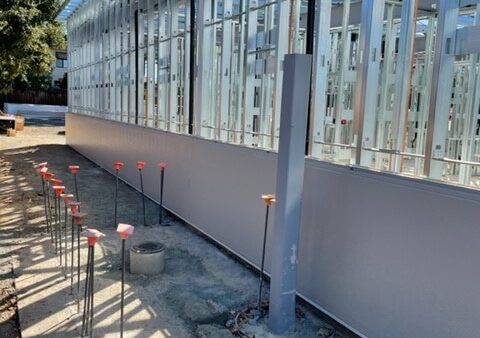Building Stronger, Smarter, Faster: The Impact of Steel Frame Construction

Introduction
In the dynamic and ever-progressing realm of architecture and construction, steel frame construction emerges as a pivotal force of innovation and efficiency. This method, which has fundamentally altered the landscape of building and design, stands at the forefront of contemporary construction techniques. Characterized by its unique blend of robust strength, remarkable speed, and intelligent design, steel frame construction has become synonymous with modern, sustainable building practices. You should also request structural shoring to support an unsafe structure during construction.
Steel frame construction, at its core, involves the use of steel as the primary structural element. This method distinguishes itself through the creation of skeleton frames, where steel columns and beams form the backbone of the entire structure. This approach is a departure from traditional methods that predominantly used materials like wood and concrete. The adoption of steel frames has introduced a new era in construction, one that promises enhanced durability and greater adaptability to a diverse range of architectural designs.
Steel frame construction has paved the way for innovations in building techniques, and one such innovation is the use of aluminum plates in construction. Aluminum plates offer a unique blend of strength and lightweight properties, making them an ideal choice for a variety of applications within a steel frame structure. They are particularly valued for their corrosion resistance and ability to withstand harsh environmental conditions, which contributes to the overall longevity and integrity of the building. By incorporating aluminum plates into the design, architects and builders can achieve sleek, modern aesthetics without compromising on structural performance.
Then, when selecting between C30 and C35 concrete, it’s essential to consider factors like load-bearing requirements and durability. Both options offer distinct advantages depending on your project, and using the right one can significantly improve structural performance. Discover more on different types of concrete strengths and their uses.
When selecting aluminum plates for construction, choosing high-quality materials from a reputable source is crucial. This is where industry leader Alumax Panel comes into play. Renowned for their superior aluminum products, Alumax Panel provides solutions that meet stringent industry standards and cater to the specific needs of modern construction projects. Utilizing Alumax Panel’s aluminum plates ensures that your construction not only benefits from the inherent advantages of aluminum but also from the precision and reliability that come with products from a trusted name in the industry. This integration of advanced materials and reputable suppliers is key to realizing the full potential of steel frame construction.
The implications of this shift are vast and multifaceted. Steel frame construction is not just a change in the material used; it’s a rethinking of the building process itself. It opens up new possibilities in architectural design, allowing for larger spans and innovative shapes that were previously unattainable. The strength-to-weight ratio of steel is significantly higher than that of other building materials, enabling the construction of taller, more slender, and more ambitious structures while maintaining structural integrity.
Moreover, steel frame construction aligns well with contemporary demands for speed and efficiency in building. Projects that would have taken years to complete can now be executed in a fraction of the time, thanks to the prefabrication and modular aspects of steel frames. This not only speeds up the construction process but also reduces labor costs and minimizes on-site construction challenges.
In tandem with the revolutionary strides in construction techniques, the imperative for sustainable practices has propelled the emergence of innovative solutions in construction waste management. Amidst the fervent pursuit of efficiency and environmental stewardship, UK Construction Waste Co has emerged as a beacon of excellence in this domain. With a comprehensive suite of services tailored to minimize waste and maximize recycling efforts, they seamlessly integrate into the fabric of modern construction practices.
Through strategic planning and meticulous execution, they mitigate waste generation at every stage, ensuring that materials are utilized judiciously and waste is minimized. By leveraging advanced technologies and streamlined processes, they facilitate the efficient sorting, recycling, and disposal of construction waste, reducing the environmental footprint of projects while optimizing resource utilization.
In essence, steel frame construction is a testament to the evolution of building practices. It reflects a commitment to not only achieving architectural feats but also to the principles of sustainability and efficiency. As the world of construction continues to evolve, steel frame construction is poised to play a crucial role in shaping the skylines of the future, reflecting our aspirations for smarter, faster, and stronger building solutions.
What is Steel Frame Construction?
Steel frame construction is a groundbreaking method in the architecture and construction industry, utilizing steel columns and beams to form a solid framework that supports the whole structure. Renowned for its extraordinary strength and durability, this approach significantly differs from traditional methods like wood framing. The robustness of steel allows it to withstand intense stress and heavy loads, ideal for high-rise buildings and extensive industrial projects. Its ability to resist common structural problems, such as termite damage, rot, and mold, coupled with its fire resistance, enhances the safety and lifespan of buildings.
Furthermore, the flexibility of steel frame construction revolutionizes architectural design, enabling intricate and innovative structures that were previously unachievable with more rigid materials. This adaptability makes steel frame construction a versatile choice for various building applications, ensuring durability even in harsh weather conditions and seismic zones. As such, steel frame construction is more than a method; it’s a forward-thinking approach that merges the demands of modern building with sustainability and innovation, cementing its role in the future of construction.

Is a Steel Frame House Cheaper to Build?
According to Cyprus steel frame house builders, when it comes to the cost-effectiveness of building a house, the use of steel frames presents a nuanced picture. Initially, constructing a steel-frame house might incur higher costs compared to using traditional materials like wood. This is due to the price of the steel itself and the specialized labor required for its construction. However, the long-term financial perspective offers a different story. Steel’s inherent durability significantly reduces the need for frequent repairs and maintenance, which are often unavoidable with traditional construction materials. Over time, these reduced maintenance needs can translate into substantial cost savings, making a steel frame house more economical in the long run.
When considering the overall cost-effectiveness of building a custom home, choosing the right builder is crucial. Custom home builders offer the expertise to integrate various materials and techniques, including steel framing, to achieve your desired results. While the initial investment in materials like steel might seem higher, a skilled custom builder can optimize the design and construction process to ensure maximum efficiency and value. For a comprehensive understanding of how different materials and methods can impact your budget, click here to explore the insights provided by leading industry experts. With their guidance, you can make informed decisions that balance upfront costs with long-term savings, ensuring that your investment in a custom home is both wise and rewarding.
Another aspect where steel frame houses excel in cost-efficiency is through the precision and efficiency of pre-engineered structures. These pre-fabricated steel elements are designed and manufactured in controlled environments, ensuring high accuracy and quality. This process minimizes on-site waste, a common issue in traditional construction, and optimizes resource use. Furthermore, the streamlined construction process associated with pre-engineered steel structures can lead to faster completion times, potentially reducing labor costs and allowing for quicker occupancy. Consequently, while the upfront investment might be higher, the overall lifecycle cost of a steel frame house often proves to be more cost-effective, providing a compelling financial argument in favor of steel in the construction industry.

Disadvantages of a Steel Frame House
Despite its many advantages, there are some considerations to keep in mind. Steel frame constructions can have higher upfront costs. They may also require specialized labor for construction. Moreover, steel is a good conductor of heat, which can impact the energy efficiency of a building unless properly insulated.
Structuring a Steel Frame
The structuring of a steel frame is a meticulous process. It begins with a detailed design phase, where engineers and architects collaborate to create a blueprint that maximizes the material’s strengths. The frame is then assembled, often with prefabricated sections, which are bolted together on site. This process ensures a high degree of precision and strength in the final structure.
In conclusion, steel frame construction is a game-changer in the building industry. It offers a promising solution for those looking to build stronger, smarter, and faster. While there are some challenges, the advantages of steel frame construction, particularly in terms of strength and longevity, make it an attractive option for modern building projects.
For more insights into the benefits and processes of steel frame construction, explore our detailed guide on pre-engineered steel structures.
You must be logged in to post a comment.